News
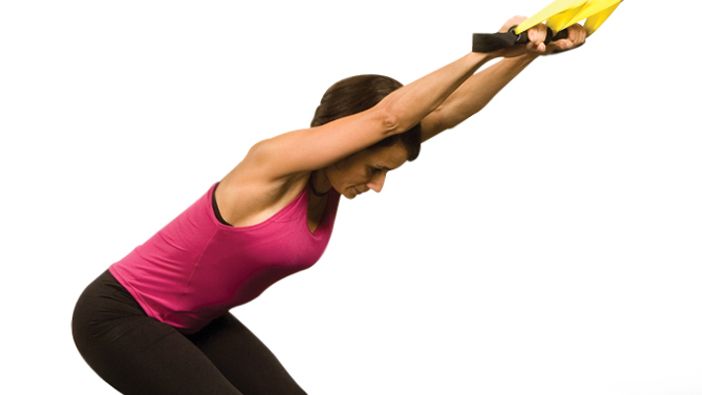
TRX for Fibromyalgia
Here, Dr. Perkash addresses a question submitted by a member of the TRX Community who's fiancée has been diagnosed with Fibromyalgia, a complex chronic pain disorder that affects people physically, mentally and socially.
Question:
My fiancée was diagnosed with Fibromyalgia a few years ago. I have been experimenting with different techniques to use with the TRX Suspension Trainer to help her because with this condition, her muscles are much weaker and have a tendency to tear easily. Any suggestions on how to help? In particular, it would be beneficial for her to strengthen her core muscles, since that's where she is weakest.
Answer:
Fibromyalgia is a condition that involves pain throughout the body, especially in the joints, muscles, tendons and spine. The pain can affect some parts of the body, such as the neck or back, more than others at any given time. Patients report stiffness throughout their body and joints. People with Fibromyalgia tend to wake up with body aches and stiffness, which generally improves during the day with activity and gets worse at night, although some patients have pain constantly throughout the day.
There is no definitive "cure" for Fibromyalgia. Treatment involves managing the symptoms of pain and other symptoms in order to live a more functional life. These treatments can involve physical therapy, cardiovascular and fitness training exercises, stress relief, improving the sleep cycle and possibly medication. Eating a healthy, well-balanced diet, avoiding caffeine and regular acupuncture treatments are also strategies that may help some patients with symptoms of Fibromyalgia.
The TRX Suspension Trainer is an excellent tool for general body fitness, and indeed, for helping to manage the symptoms of Fibromyalgia. Exercises using the TRX can help with cardiovascular, strength and core fitness goals in patients with Fibromyalgia. In general, patients with Fibromyalgia who exercise regularly feel fewer pain symptoms and are more functional than those who do not exercise regularly. It is well known that exercise involves the release of endorphins, which can help decrease generalized pain of any kind in any given person.
She should start with basic TRX exercises and move through progressions as her body allows. Here are some basic core stabilizing exercises that she can try initially on the TRX Suspension Trainer:
TRX Torso Rotation
TRX Resisted Rotation
TRX Standing Hip Drop
TRX Crunch
TRX Lower Back Stretch
TRX Quadruped
TRX Plank
TRX Supine Plank
My advice for any Fibromyalgia patient would be to begin slowly in order to see how her body responds to exercise. The target should be a minimum of 30 minutes of cardiovascular exercise per day three to five days per week and at least two to three days of strength/core training per week. As her body strength and endurance tolerates, she can gradually build up to these goals and even exceed them. She should seek the guidance of her physician to help her manage the dynamic and often changing symptoms of Fibromyalgia.
Have a question for the TRX Doctor? Email askthedoc@trxtraining.com. For more on how TRX Suspension Training bodyweight exercise is a safe, scalable and effective solution for you or your patients, visit our Sports Medicine page and download our White Paper. Be sure to check the Blog every Thursday for another TRX Sports Medicine post.
NOTE: Any medical information in this blog is of a general nature and not a substitute for the advice of a medical professional. If you need medical advice, see a doctor.

TRX for Elbow Tendinosis
Who among us has not felt a little twinge or ache at the end of a long day hunched over a keyboard and mouse? Our growing dependence on technology has given rise to another trend: the incidence of overuse injuries has increased over the past 20 years, and this trend is sure to persist as Apple and others continue to release the latest and greatest "must have" gadgets. If you've ever been on the receiving end of a tendonitis, tennis elbow, carpal tunnel syndrome or wrist tendonitis diagnosis, read on as TRX Community member Rob B. asks Dr. Perkash about his elbow tendinosis (not be to confused with tendonitis) and what exercise, if any, he can do without pain or discomfort.
Question:
I've been diagnosed with tendinosis (versus “itis”) in my elbows from overuse. I've tried ice, heat, electrical current, stretching, massage therapy and prolotherapy, all with no results. The lightest weight aggravates the pain, which goes from dull and aching to sharp and shooting. I just want my arms back. I'm 53 years old now, and I know recovery will be slow, but I rested them for 16 months with no exercise, and even gradual return to curls, etc proved in vain. Can you please help me?
Answer:
Tendinosis is a term used to describe the anatomic, inflammatory changes that occur in a tendon usually seen on an MRI scan. This simply describes the anatomic changes in a tendon that likely occurred over time, perhaps as a result of normal wear and tear or possibly due to cumulative trauma. Seeing visual findings of tendinosis on an MRI does not inevitably mean that that structure is painful. It can simply mean that a tendon has undergone some normal age-related changes over time, with or without pain.
Treatment should be directed by the specialist and may include medications to reduce pain and inflammation, physical therapy, modalities such as heat, ice, ultrasound, bracing, acupuncture, steroid injections and, in rare cases, surgery. In cases that are resistant to traditional treatments, some patients find pain relief with acupuncture or other alternative treatments. Most patients do find some improvement over time with an appropriate, gradual stretching and strengthening program. The TRX is suitable as a useful tool to contribute towards this usually prolonged rehabilitation effort. Any exercises performed in the setting of a chronic, debilitating injury should be done so under the guidance of a physician specialist and a physical therapist.
I encourage you to follow up with your physician specialist for further guidance regarding your specific condition, for further potential diagnostic work and/or guided treatment options.
Have a question for the TRX Doctor? Email askthedoc@trxtraining.com. Looking to find exercises perfectly matched to your unique fitness journey? Take our quick fitness assessment quiz to receive customized TRX workout recommendations tailored to your goals and experience level. For more on how TRX Suspension Training bodyweight exercise is a safe, scalable and effective solution for you or your patients, visit our Sports Medicine page and download our White Paper.
TAKE OUR TRAINING QUIZ
NOTE: Any medical information in this blog is of a general nature and not a substitute for the advice of a medical professional. If you need medical advice, see a doctor.
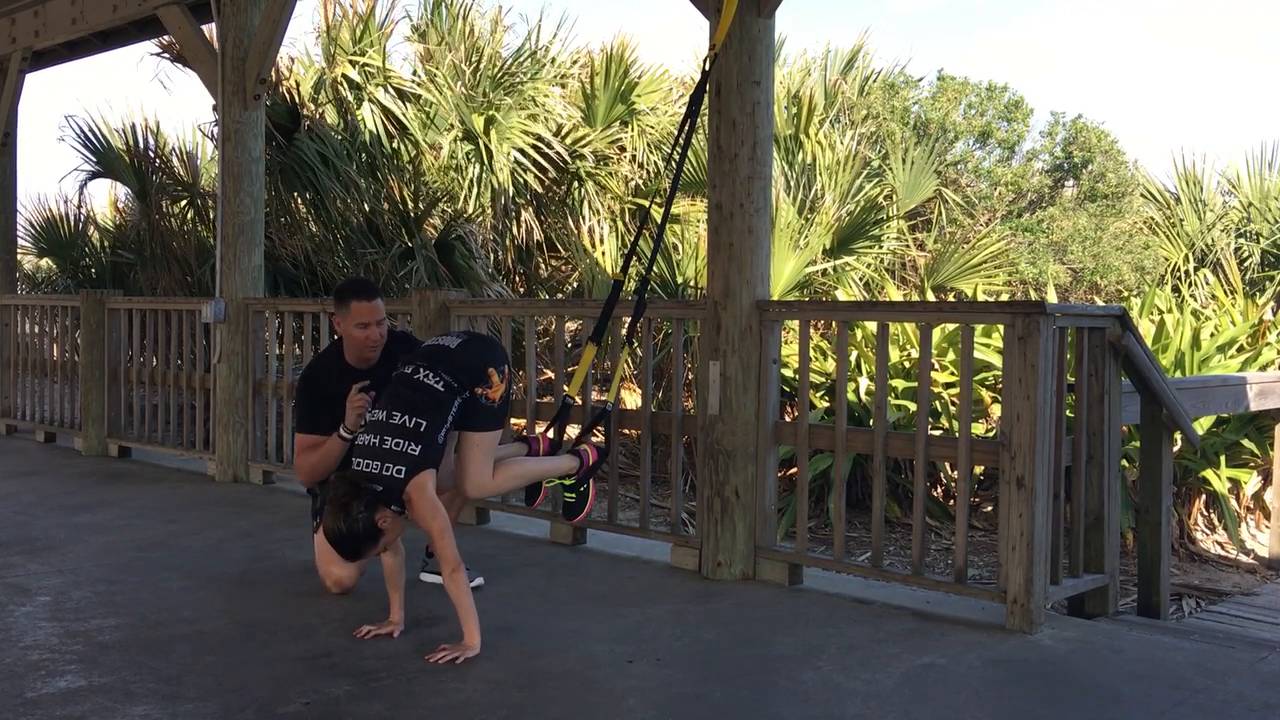
TRX® for Cycling: Your new training tool
The TRX® Suspension TrainerTM is an incredible tool for cycling. Cycling requires simultaneous bilateral coordination, core strength and stability. When incorporating SUSPENSION TRAINING® into your cycling training program, it is important to train for the demands of the sport while simultaneously working on imbalances between the dominant and non-dominant leg.
The first demand is in building a more smooth & efficient pedal stroke overall. The second demand is strengthening the "pulling-up" portion of the pedal stroke. Here are some moves that will help you train for these two demands:
●TRX Forward Lunge w/ Y-Fly (alternating legs) 30sec x 2
●TRX Hamstring Runner 15sec on 5 sec rest x 3
●TRX Pike 15sec x 2
●(Advanced) TRX Pike w/Isometric Holds (alternating) Step Backs 15sec x 2
●(Advanced) TRX Pike Climber 15sec x 2
●TRX Overhead squat 30sec x 2
●TRX Sprinter Start 30sec (alternating) x 2
The focus of these TRX® Suspension TrainerTM exercises is on setting up a strong "active plank", maintaining it throughout these movements, and being sure to regress them if there is failure. TRX Pikes and Climbers should be done with complete control (no "sawing" in the main straps), with an increase in speed to failure, back to regression, then back to an active plank before returning to the start position (knees and hands). Remember, it's not about how many you can do, rather how many you can do correctly.
Adding these moves into your training program and workout routine will surely increase your core strength and stability and help you reach the goals you’ve been working towards.
Bio: Chris has always been an avid cyclist and active competitor. After finding a passion for coaching small groups on indoor bikes, he turned to group fitness, where he worked to become an elite level indoor cycle instructor & Presenter. Now as a Master Trainer and "BLACK & YELLOW" rank Senior Course Instructor for TRX Training, Chris not only train clients and small groups locally, but also delivers TRX education course content to personal trainers & coaches around the country. Chris also works with several top fitness brands and gyms, from business development and marketing, to developing strong and profitable small group training programs.
FB www.facebook.com/ChrisatTRX
IG www.instagram.com/trxchris/

TRX for Back Pain Prevention
In this installment of "Ask the TRX Doctor," Dr. Perkash fields a question from member Paul S. on the best TRX exercises for prevention of back pain, especially for someone who is short on time.
QuestionI am a regular TRX user and affiliate, and I have the TRX Healthy Back DVD, and it is excellent. Like many people, I sit for many hours in front of my computer while working. Several years ago, I fell down a flight of stairs and broke one of the disks in my lower spine. After several months of suffering from sciatic pain, I had part of the disk removed, and I am doing fine now, thanks to a great surgeon and my TRX. As part of my rehab, I have been performing exercises on my TRX, and I believe it has helped to strengthen my spine and prevent back pain. But I am wondering, in your opinion, what are the best TRX exercises to prevent lower back pain and sciatica from occurring in the first place? What would be your top three TRX back exercises for someone who is short on time? Your response may prevent millions of people who are suffering from back pain!
AnswerIt has come to be recognized in the medical community how important exercise, in general, is for longevity and general well being. Similarly, it is equally important to do exercises regularly to maintain a healthy back, especially as we get older. As we get older, many of the structures in our bodies slowly deteriorate. With the advent of MRI technology over the past 20 to 30 years, we have been able to more vividly observe disc degeneration as it occurs in the general population. This process occurs in all of us with each decade of life, usually beginning between ages 30 to 40. In some of us, discs can fail and bulge, protrude or fully herniate and cause pain. While disc degeneration is inevitable as we age, to one degree or another, low back pain is not.
It is understood that by strengthening the soft tissues (i.e. muscles, ligaments, tendons, etc) around the spine, the deeper, weaker structures have a lower likelihood of becoming painful. In other words, if the deeper structures in the spine can be well supported by other structures surrounding them, then there is a lower chance of pain and injury as we get older. These structures have been termed collectively as the “core” in the physical therapy and exercise realm. This is a rather broad term that encompasses soft tissue musculoskeletal structures surrounding virtually the entire spine and especially the lower back.
The important factor in deciding an exercise program is finding one that meets the needs, ability level and goals of an individual. Want to find exercises that are safe and effective for your specific condition? Take our quick assessment quiz to get a personalized plan that takes into account your health history.
TAKE OUR TRAINING QUIZ
For instance, the right exercise for a 20 year old who has never had back pain are not the same as a 70 year old with a history of lumbar degenerative disc disease with narrowing of the spinal canal (i.e. spinal stenosis). There are literally an infinite number of exercises that can be done at different vector angles using the TRX, and therefore, unique groups of exercises that should be tailored for any given person.
For anyone who has had a disc/back problem in the past, some guidance should be provided/solicited from their physical therapist and/or physician regarding their restrictions. Once this has been clearly established, then core stabilization exercises can be initiated. I wish I could simply provide you with a simple cook book answer of which three TRX exercises are “best” for the back. In contrast, I think the benefit of the TRX is that virtually every exercise that is done using the TRX activates the core musculature and therefore strengthens the lumbar spinal musculature either directly or indirectly. Indeed, the TRX is a significant component of my own exercise regimen.
Better advice is for anyone using the TRX or any other exercise equipment to consult a health professional or trainer to work towards an individualized exercise program based upon his/her needs, ability and goals. The TRX Biomechanics: Healthy Back DVD is an excellent guide, and progressions in this regard are literally limitless. It is not so much which specific exercises anyone does but rather how those exercises complement the rest of that individual’s personal exercise program. All core stabilization exercises should be part of a general cardiovascular, flexibility and strengthening exercise program.
In addition, ergonomic factors should be addressed. For anyone sitting in front of a computer, an appropriate ergonomic set-up should be ensured. Frequent stretching breaks should be taken every 30 to 60 minutes and last a few seconds. Prolonged sitting with proper ergonomics is tolerated more easily than even moderate sitting with poor ergonomics.
Although there are many back exercises someone can do with the TRX including the following:
TRX Plank
TRX Crunch
TRX Pendulum
TRX Mountain Climber
TRX Pike
TRX Low Row
TRX Hamstring Runner
TRX Torso Rotation
TRX Hip Drop
TRX Squat
TRX Hip Press
TRX Lunge
TRX Standing Roll Out
The proper combination of these exercise for a given individual may vary for the reasons mentioned above, so start on the conservative side and progress or regress the intensity appropriately.
Have a question for the TRX Doctor? Email the Doc today! We’ll be featuring these Q&As as regular blog posts going forward.
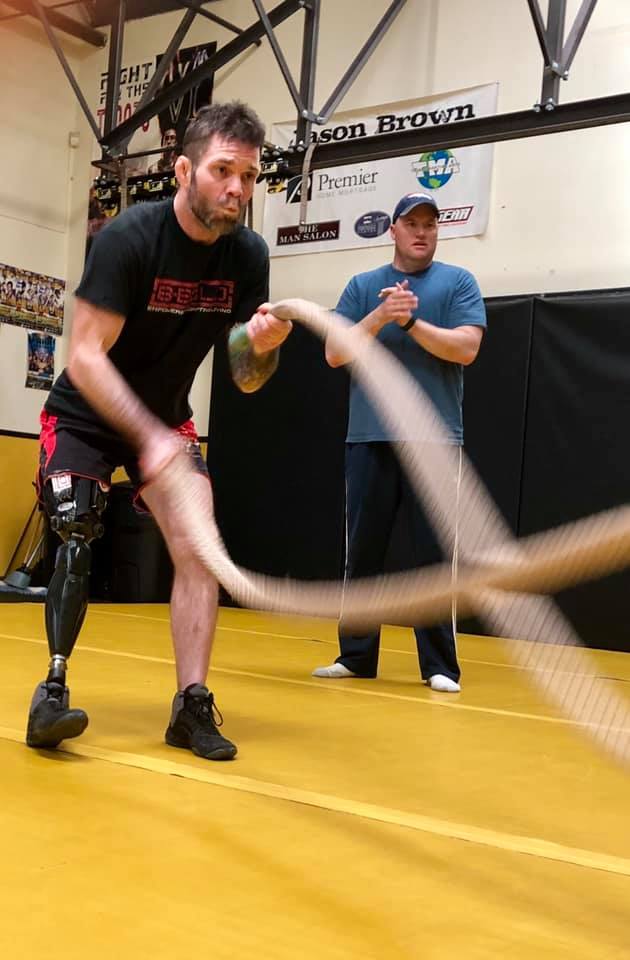
TRX for Adaptive Athletes
The High Fives Foundation, a non-profit organization that helps winter action sport athletes who have suffered life-altering injuries, has developed new adaptive workouts using TRX Suspension and Rip Training. Looking to adapt TRX exercises to your specific needs? Take our quick assessment quiz to get customized workout recommendations that accommodate any limitations while helping you reach your goals. In this video, personal trainer Chris Cloyd of Performance Training Center in Truckee, CA leads a pair of High Fives adaptive athletes through a rehabilitative workout, showcasing the scalability of TRX for people of all levels.
TAKE OUR TRAINING QUIZ
“Introducing instability helps us engage core musculature that our adaptive athletes don’t see in a day-to-day basis and really redefine what posture is for them,” said Cloyd.High Fives has been implementing TRX Training in its practice for some time now and even aided professional skier Jake Hickman in his triumphant return to the slopes after suffering a severe spinal injury and paralysis in his legs. Watch Jake’s story here.
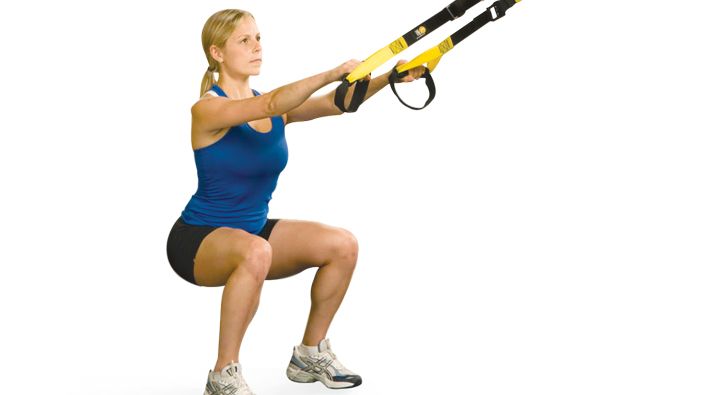
TRX for ACL Tear
The anterior cruciate ligament (ACL) is one of the most commonly injured ligaments of the knee, with approximately 200,000 ACL injuries reported annually. (Approximately 50% of patients with ACL injuries also have meniscal tears.) In this installment of Ask the Doctor, Dr. Perkash addresses a question posed by a member of the TRX Community on when it’s safe to start incorporating TRX Suspension Training after undergoing surgery to repair a torn ACL.
Question:
I am an avid TRX user and active athlete. I am a HS wrestling coach, Jiu Jitsu fighter and help train MMA athletes. I tore my ACL about five weeks ago and had surgery two weeks ago. Rehab is going well, and I have been working hard on it.
I am still training on the TRX Suspension Trainer, doing a lot of upper body work. I have been doing TRX Single Leg Squats and TRX Single Leg Hamstring Curls. I watched a video on the TRX website showing the TRX Hip Press, TRX Sprinter Start and TRX Single Leg Squat. How many weeks out of surgery can I start these exercises?
Also, do you recommend that I take any supplements to help recovery? I am a health nut and eat very well. I supplement a lot and just got some joint supplements. Is it a good idea to take a joint supplement for the recovery process? Thanks for your help.
Answer:
The treatment of a torn anterior cruciate ligament (ACL) has evolved over the past 15 years. There are a number of different treatments that have been offered ranging from conservative treatment for partial tears to reconstructive surgery with various types of materials used for the graft to replace the fully torn ACL. The graft material can be from the the patient's own patellar tendon, hamstring tendon, other tendons in the patient's body or cadaveric tissue can be used for the graft. Different physicians in various parts of the country use different materials, depending upon regional practice styles and training backgrounds. There are pros and cons to each of these types of grafts.
Furthermore, the surgery involved in an ACL repair has also evolved over time. Some portion of this surgery can be performed arthroscopically, meaning only small incisions are potentially needed for the surgery to be performed through a "scope" in which the surgeon can visualize the inside of the knee without actually making a large incision and looking directly at knee anatomy. Furthermore, many ACL tears are associated with injuries to other parts of the knee, such as the meniscus and the collateral ligaments. The bone plugs that hold the graft usually take at least eight to 12 weeks to become secure and stable in the bones of the knee.
Depending upon the nature of your surgery, the rehabilitation may vary somewhat in terms of milestones reached at a given point post-operatively, and the details of your rehabilitation should be discussed with your orthopedic surgeon and physical therapist.
The goal of rehabilitation after an ACL repair is to try to maintain range-of-motion early after the surgery. Advancement of exercises can depend upon the nature and invasiveness of the surgery, degree of injury and other medical factors, usually under the guidance of a physician and physical therapist. After an appropriate period of time, more advanced strength, flexibility, proprioceptive and agility training can be undertaken. To reduce the risk of future injuries and improve performance, this usually includes some core strengthening exercises as well.
Exercises that can be useful for rehabilitation after an ACL repair using the TRX include (with progressions). Want to find safe, effective exercises for your ACL recovery? Take our quick assessment quiz to get a personalized plan designed around your rehabilitation stage:
TAKE OUR TRAINING QUIZ
TRX Half Kneeling Hip Flexor Stretch
TRX Hip Hinge
TRX Quad Stretch
TRX Calf Stretch
TRX Plank
TRX Standing Hip Drop
TRX Squat
TRX Lunge
TRX Single Leg Squat with Leg Assist
TRX Hip Press
TRX Hamstring Curl
TRX Hamstring Runner
TRX Sprinter Start
It is important to take guidance from your physician and physical therapist regarding rehabilitation of your specific situation.
With regard to supplements, there is no specific evidence that joint supplements such as glucosamine or chondroitin are advantageous after ACL repair. However, there is some literature to support glucosamine and chondroitin in reducing pain in knee osteoarthritis. It is unlikely that joint supplements will do any harm with chronic use, and since there may be some benefit in curbing symptoms of knee cartilage degeneration, there is very little downside in taking these chronically as we get into our 30s and 40s.
Good luck in the rehabilitation of your knee and in your general fitness!
For more on how TRX Suspension Training bodyweight exercise is a safe, scalable and effective solution for you or your patients, visit our Sports Medicine page.
NOTE: Any medical information in this blog is of a general nature and not a substitute for the advice of a medical professional. If you need medical advice, see a doctor.
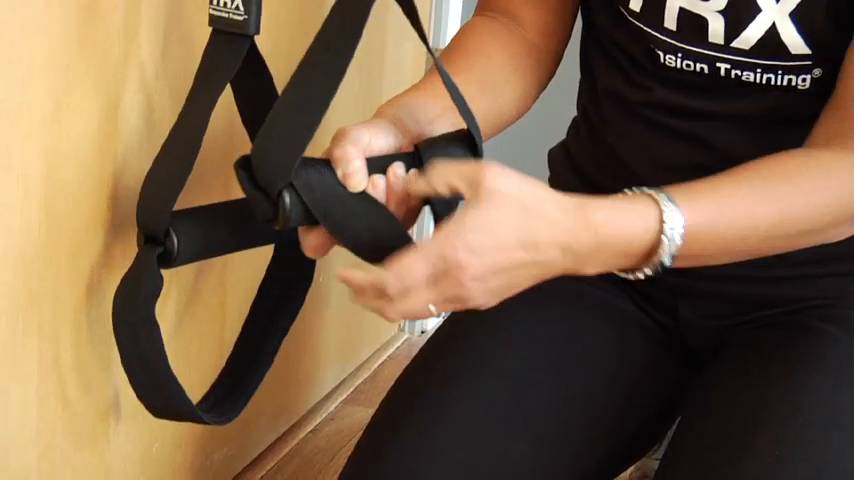
TRX Foot Cradles and Keeping Your Foot From Slipping, Ask the Trainer
You're powering through a set of TRX Atomic Push-ups when it happens. Your foot, not restricted to the confines of a shoe, slips through the foot cradles of your TRX Suspension Trainer, and you briefly lose focus (not to mention a few precious reps if you're in a group TRX workout), as you stop and re-holster your errant foot.
With the rise in popularity of barefoot training as well as the rise in diverse populations on the TRX (youth and women with youthfully small feet), this is a question we've been asked on the TRX Community Forums: what can you do to keep your feet from slipping through the foot cradles when you're doing ground-based exercises on the TRX, such as the TRX Incline Press and TRX Mountain Climbers? To help us with this request is TRX Master Trainer Lynne Virant. Wondering if these exercises are right for your fitness level? Take our quick assessment quiz to get personalized recommendations and form tips tailored to your needs. Watch as she demonstrates two exclusive insider tricks for preventing foot slippage in the TRX.
TAKE OUR TRAINING QUIZ
Lynne Virant is a TRX Master Trainer, an ACE-certified personal trainer and group fitness instructor whose passion for health and fitness is as varied as her education and experience. She has a degree in Aerospace Engineering and in Allied Health as a Physical Therapist Assistant. Her experience in sports and fitness includes five marathons, climbing Mount Baker, tennis, golf, volleyball, skiing, snowboarding, mountain biking and fitness competitions.
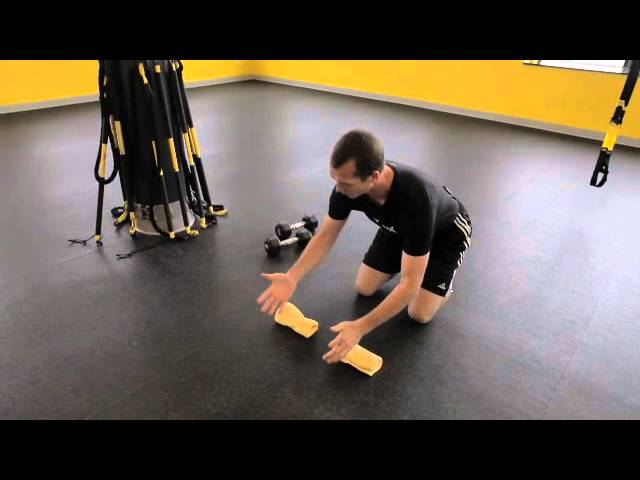
TRX Exercises with Wrist Pain Modifications, Ask the Trainer
We've received this question on the Forums: how do you perform TRX exercises that place an impact on the wrist if you have a wrist injury or pain? Here to answer the question is TRX Director of Sports Medicine, Brian Bettendorf. This is a relatively common speed-bump people encounter when getting into TRX Training, especially while planking, performing a TRX Push-up or any movement that requires wrist extension. Not sure which exercises are safe for your wrists? Take our quick assessment quiz to get personalized workout recommendations that take into account any injuries or limitations – we'll help you find effective alternatives that let you train safely while working around wrist issues.
TAKE OUR TRAINING QUIZ
As Brian points out, there are two likely causes for this. The first, and easier to solve for, is when the wrist joint becomes overloaded because the fingers, hands and forearms are not being engaged to evenly distribute the tension. If this is the case, try splaying the fingers out and actively trying to grip the ground, like your fingers are the roots of a tree. This creates a more stable base and turns on the forearms so all of your upper bodyweight is not focused directly on the wrist joint. This on its own may decrease discomfort. If not, you could also try rotating the fingers in or out, changing the wrist’s position to unload it.
The second cause is usually brought on by a lack of mobility in the wrist joint, so extending the wrist all the way back becomes painful. Brian recommends elevating the palms with a towel. The wrist joint is no longer fully extended. However, it will now be able to painlessly bear the load of the exercise. If this doesn’t work, try performing the exercise on top of dumbbells so that the wrist is in a vertical, neutral position. This way, there is no pressure directly on the wrist joint.
If none of these work for you, the best option may be to avoid putting pressure on the wrist altogether and performing your planks from a forearm position or unloading the exercise a bit by modifying it to a static TRX Chest Press. Of course, if none of these solutions are offering you any salvation, it’s probably a good time to go see a doctor.
Anything causing you discomfort while training? Tell us below, and we'll try to find a solution for you.
Buy the new TRX FORCE Kit: Tactical here.

TRX Exercises for Triathletes
To get the most out of your triathlon training it is critical to integrate a program for building functional strength in order to develop a strong core and increase durability. Want to find the perfect strength training plan for your triathlon goals? Take our quick assessment quiz to get a personalized program that enhances your swim, bike and run. Let's take a look at a few ways to integrate the TRX Suspension Trainer into the three events that comprise a triathlon.
TAKE OUR TRAINING QUIZ
SWIMSwimming is a full body exercise made up of many things. In its simplest form, it includes a reach, pull and rotation. Three TRX exercises that map directly back to the swim include the following:
1. TRX Swimmer Pull (see video)2. TRX Standing Roll Out3. TRX Side Plank
BIKEThe bike obviously has a lower body focus. However, there are other things at work. The core, arms, shoulders and back are also engaged and under load. The first exercise below focuses on the core and upper body strength. The second does as well but opens things up in reverse. Three moves that will enhance your bike performance include:
1. TRX Plank (see video)2. TRX Overhead Back Extension3. TRX Hamstring Curl
RUNThe run is the last leg of triathlon and where the strength training is most realized as our strength and endurance limits are tested. Three moves that directly correlate to run performance include:
1. TRX Lunge (see video)2. TRX Sprinter Start3. TRX Crossing Balance Lunge
If you are looking for a workout to build your durability and keep you strong past the finish line, we recommend the TRX Endurance Athlete Workout. You can also join the TRX Training Club and get hundreds of workouts like the ones above at your disposal.
Steve Katai was introduced to the world of triathlon when he won the Degree "Everyman Ironman" contest in 2003. Five months later, he successfully finished the 2003 Ironman Florida race in less than 13 hours. Now a four-time Ironman triathlete and co-author of The Complete Idiot’s Guide to Triathlon Training, Steve continues to share his passion for training in his current position as TRX Education Manager.
